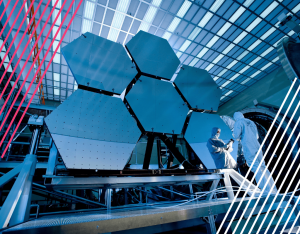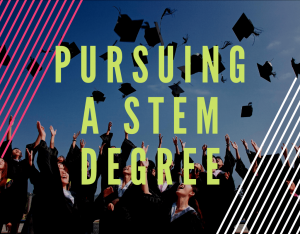If you are an educator, parent, or even a student, you may likely have, at some point, thought about how STEM education can shape the future.
When I was first hired as a librarian, I was assigned to facilitate STEM programs for tweens without even knowing its importance. So, after comprehensive research and seeing how years of facilitating these programs have helped many of my STEM program attendees, I decided to write a helpful post on how study in the fields of science, technology, engineering, and math can mold the future.
How can STEM education shape the future? STEM education equips our future leaders, neighbors, and workers with the ability to understand and solve some of the complex challenges of tomorrow, and to meet the demands of a dynamic and evolving workforce.
While it may be logical to think that STEM education would only affect fields in science, technology, engineering, and math, other fields, such as business and national security, are affected by STEM education as well.
Table of Contents
STEM Education Prepares Us For Future Challenges
The technology boom of the 90s has led to an increasing demand for STEM skills. Both businesses and government entities are using STEM skills to try to get an advantage over the competition.
STEM education is needed to meet the increasing demand for STEM-skilled people. If the demand is not met, businesses and governments can face larger problems.
A STEM-based curriculum involves real-life situations to help students learn. It evolves into more complex lessons to help learn how to solve real-world problems using creative techniques. This prepares students to be able to easily integrate into the workforce.
STEM Education Helps Us Keep Up With Technological Innovations
As technological innovations continue to grow, the number of jobs getting taken over by automation increases, leaving many workers in the dust.
According to a study done by the National Bureau of Economic Research in 2017, the International Federation of Robotics (IFR) estimates that there are an estimated 1.5–1.75 million industrial robots in operation, with the number expected to increase to 4–6 million by 2025.
Industries employing many robots include the automotive industry (39 percent), the electronics industry (19 percent), metal products industry (9 percent), and plastic and chemical industry (9 percent).
Large decreases are found within blue-collar jobs that have routine manual operations, such as assembly workers, transportation workers, and machinists. The negative impacts slightly diminish as a worker’s education level increases, and no impact exists for workers with graduate degrees.
According to a study done by the Bureau of Labor Statistics, the number of STEM occupations between 2018 and 2028 will increase by 8.8 percent, while the number of non-STEM occupations between the same timeframe will increase only by 5 percent.
STEM education simply shifts the focus towards its importance so that students are not led to find that there are little to no jobs available at the end of their educational career path.
STEM Education Fills the Need For a Skilled Workforce
“The future of the economy is in STEM, that’s where the jobs of tomorrow will be.” – James Brown, director of STEM Education Coalition
Data from the U.S. Bureau of Labor Statistics (BLS) support that assertion. Employment in occupations related to STEM is projected to grow from 6 million in 2019 to more than 9 million in 2022.
Why does that number keep growing?
For starters, STEM-related fields are growing and will continue to grow. The number of jobs that fall under STEM keeps expanding.
Jobs in manufacturing have gone from depending on routine laborers to depending on industrial robot innovation and maintenance.
In manufacturing alone, a study done by the National Association of Manufacturing and Deloitte predicts the U.S. will need to fill about 3.5 million jobs by 2025, yet as many as 2 million of those jobs may go unfilled. This is due to Baby Boomers retiring in droves combined with difficulty finding people with the skills in demand.
STEM Education Prepares a Skilled Workforce
“Skills in STEM—including, in particular, computer science…open the door to jobs, strengthening the backbone of American ingenuity, driving solutions to complex problems across industries, and improving lives around the world.” – President Donald J. Trump
Preparing learners for future jobs and empowering America’s workforce is critical to the Trump Administration’s agenda.
At the 2018 State-Federal STEM Education Summit, the Trump Administration highlighted the importance of STEM Education to the development of the future American workforce by building stronger connections between the worlds of education and work; focusing on innovation and entrepreneurship; integrating computer science principals, and improving access to STEM programs for all Americans.
K-20 Students in STEM Education, including apprenticeships, internships, cooperative education, and mentorships will have work-based learning made possible through the external partnerships that support the collaboration between school and the workplace. These partnerships may involve the certification and credentialing of programs at the K-20 levels and beyond.
“There’s no question that early exposure and ongoing access to courses in the STEM fields help students on a path to success in careers and life. As I visit schools across the nation, I see state and local leaders rethinking school to better prepare students. We need more of these innovations, and that’s why we are pleased to support expansions of STEM offerings through our grant programs.” –Betsy DeVos, U.S. Secretary of Education
On September 25, 2017, President Donald J. Trump signed a Presidential Memorandum directing Secretary of Education Betsy DeVos to allocate at least $200 million to STEM Education and Computer Science programs. In November 2018, the Department announced that it not only fulfilled but surpassed President Trump’s directive. In total, the Department allocated $279 million in STEM discretionary grant funds in Fiscal Year 2018.
America is closing the labor gap that exists between good jobs and qualified workers by improving access to STEM programs for underrepresented and underserved groups. We must ensure that all of today’s learners, from curious Kindergartners to re-skilling retirees, have access to high-quality STEM and Computer Science courses.
“NASA is proud that its missions provide so many opportunities for STEM engagement with students at all levels. We look forward to taking America back to the Moon and Mars with the strong direction of the President’s space policy directives and inspiring generations to come with the spirit of our Nation’s accomplishments and leadership in space. Our work and our engagement with millions of students through live downlinks with astronauts aboard the International Space Station and frequent interactions with students around the world are helping influence a new generation of exploration leaders to make their own giant leaps.” –Jim Bridenstine, NASA Administrator
Other Fields Are Affected By STEM Education
National Security
National security is always facing new challenges that require new solutions, so STEM education will also provide the right skillsets to focus on those challenges and make the world a safer place.
According to Arthur Herman in his commentary, “The Pentagon’s ‘Smart’ Revolution,” Our Department of Defense and other leading experts all agree that the future of America’s defense will rely on advanced technologies such as Artificial Intelligence, cyber, quantum, robotics, directed energy, hypersonic weapons, and even 3-D printing.
Since these technologies are important for the United States to maintain its military superiority over its rivals, including China, they will also require higher levels of scientific and engineering understanding from their designers, producers, and users.
Business
Many businesses also seek STEM majors to fill important job roles. Examples of this include Data Scientists, UX Design, and Research & Development.
Data scientists make use of data to the benefit of a business. They often use tools powered by Machine Learning and Artificial Intelligence to deal with large amounts of data.
UX Design is a creative tech role. They figure out how products look and feel for users. Coding is used to create amazing user experiences on sites, apps, or products.
Research & Development combines science and technology to help businesses innovate and stay ahead of the competition.
Related Questions
What fields fall under STEM?
STEM stands for science, technology, engineering, and math, but it includes a wider range of academic disciplines. The following are just some examples:
- Accounting
- Astronomy
- Biochemistry
- Civil Engineering
- Computer Science
- Electrical Engineering
- Mechanical Engineering
- Statistics
Is STEM important for adults?
STEM is important for adults because it is found in our everyday lives. Our children are being taught STEM skills in school but teachers should not be the only ones promoting STEM education. Parents must also encourage their kids to take on STEM activities. Technological advancements in the past decade have caused the change in job requirements to include STEM related skills. Keeping up with STEM education may help ensure job security.



